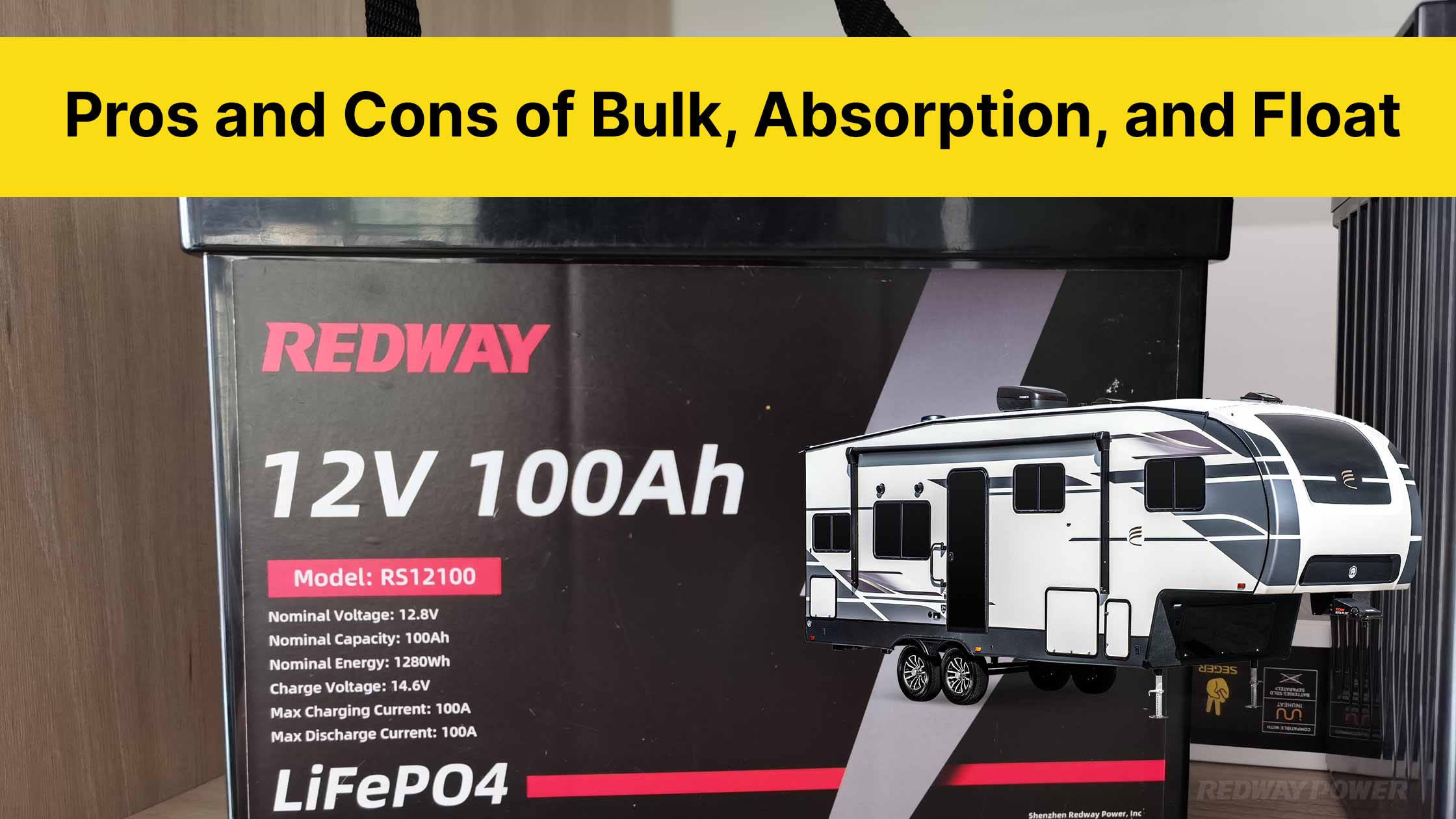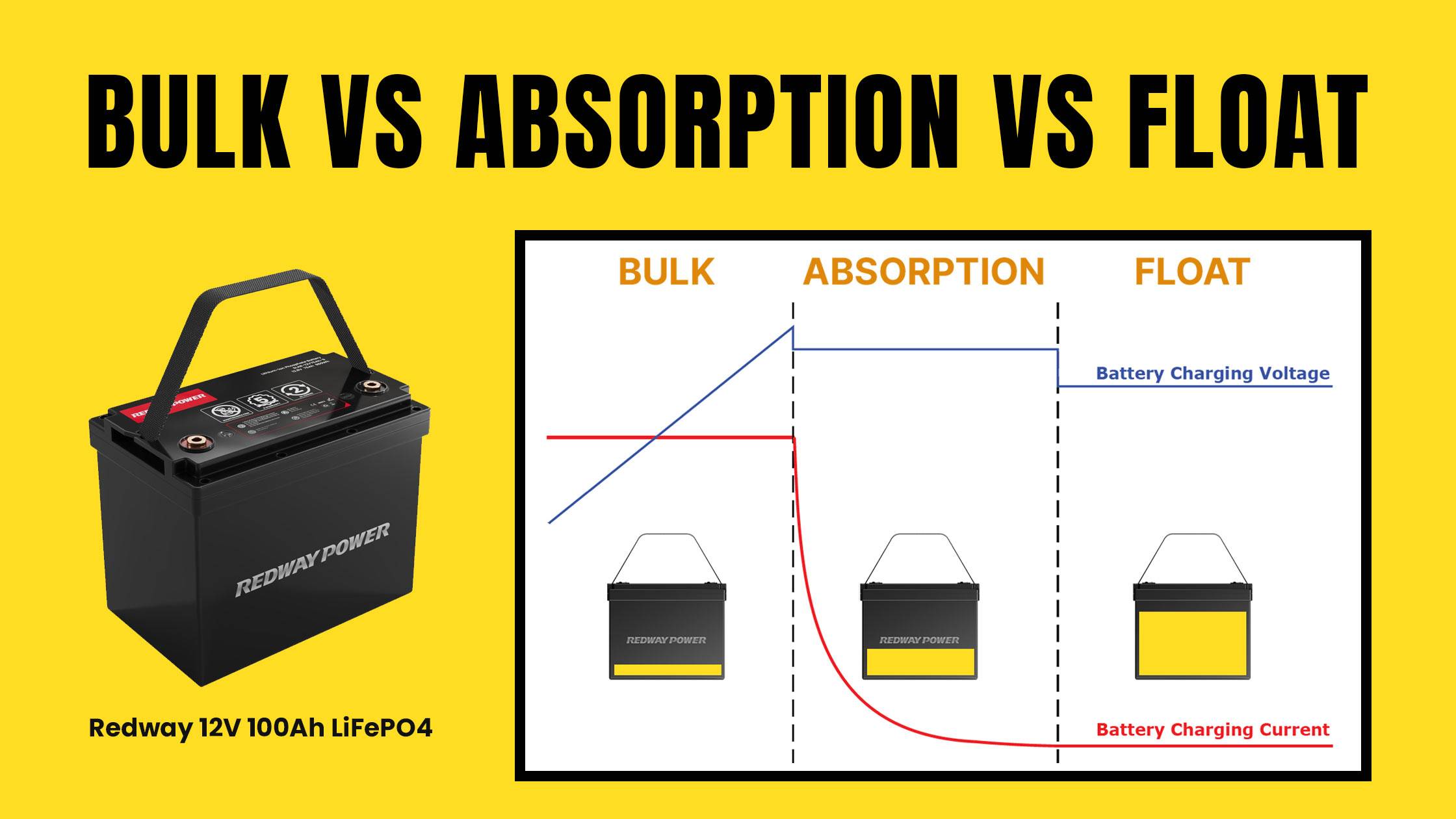Bulk, Absorption, and Float are three essential stages in charging lead-acid batteries. During Bulk, the battery rapidly charges with constant current and rising voltage. Absorption maintains a constant voltage while current decreases, ensuring full capacity without overcharging. Float maintains a lower voltage to keep the battery fully charged long-term without overload, safeguarding optimal capacity and preventing sulfation.
Understanding the Differences Between Each Method
Understanding inventory management methods like bulk, absorption, and float is essential for businesses. Each approach has distinct characteristics and benefits.
- Bulk Inventory: Involves purchasing large quantities of products at once, often at discounted prices. Ideal for businesses with ample storage space and accurate demand forecasting. Helps reduce costs per unit and overall expenses.
- Absorption Inventory: Gradually replenishes stock as items are sold or consumed. Aligns inventory levels with customer demand to prevent overstocking or understocking. Lowers carrying costs while ensuring sufficient stock availability.
- Float Inventory: Relies on just-in-time principles, maintaining minimal on-hand stock and relying on frequent deliveries. Reduces holding costs but requires reliable suppliers for prompt deliveries. Factors such as cash flow, storage capacity, and supplier relationships influence the choice of method.
How to Determine Which Method is Best for Your Business
Determining the most suitable inventory management method for your business is crucial for efficiency and cost-effectiveness. Here’s a step-by-step guide to help you make the right decision:
- Assess Your Business Needs: Evaluate your business’s size, transaction volume, and demand fluctuations to understand its unique requirements.
- Analyze Cost Implications: Consider the costs associated with each method, such as storage, financing, or transaction costs, and how they align with your budget.
- Consider Time Constraints: Determine if time sensitivity is critical for your operations and choose a method that meets your timeline requirements.
- Evaluate Risk Exposure: Assess the risks associated with each method, such as inventory obsolescence, interest rate fluctuations, or default risks, and choose accordingly.
- Seek Professional Advice: Don’t hesitate to consult supply chain or finance experts for guidance if needed to make an informed decision.
Remember, the best method depends on your business’s specific needs and goals. Take the time to analyze each aspect carefully to ensure optimal inventory management.
Pros and Cons of Bulk, Absorption, and Float
Understanding the pros and cons of bulk, absorption, and float methods is essential for effective inventory management. Here’s a breakdown of each method:
- Bulk Method: Pros include lower cost per unit and stocking up on high-demand items. However, it requires more storage space and ties up capital.
- Absorption Method: Pros involve steady inventory flow without overwhelming storage or cash flow. Yet, it may not suit all products or industries with fluctuating demand.
- Float Method: Pros include reduced carrying costs as inventory isn’t idle. But heavy reliance may lead to supply chain vulnerabilities.
Consider your business’s specific needs and goals when choosing the best method for inventory management.

Real-Life Examples of Each Method in Action
In real-life scenarios, various industries apply bulk, absorption, and float methods to manage their operations effectively. Here are some examples:
- Bulk Purchasing: Retail chains often negotiate discounts with suppliers by purchasing goods in large quantities. For instance, supermarkets offer discounts for buying in bulk, passing on savings to customers.
- Absorption Costing: Manufacturing companies allocate overhead costs to products. For example, an automobile manufacturer includes indirect expenses like factory rent in the production cost of each vehicle.
- Float Pricing: Airlines and hotels adjust prices based on demand. During peak travel seasons, flight tickets are more expensive due to increased demand, showcasing float pricing strategies.
These real-life examples demonstrate how businesses tailor their methods to meet specific needs and maximize efficiency and profitability. It’s crucial to assess which method aligns best with your business objectives to make informed decisions.
Tips for Maximizing Efficiency with Bulk, Absorption, and Float
Maximizing efficiency with bulk, absorption, and float methods requires careful planning and execution. Here are some practical tips to help you make the most of each technique:
- Plan Ahead: Take time to organize tasks and processes before implementing any method. Clear planning ensures effective utilization of bulk, absorption, and float strategies.
- Prioritize Tasks: Identify important tasks and allocate resources accordingly across the three methods. Prioritization ensures efficient use of resources based on task significance.
- Utilize Technology: Leverage tools like project management software to automate tasks and streamline workflows. Technology enhances efficiency and provides real-time progress visibility.
- Maintain Communication: Communicate effectively within teams to ensure everyone is informed and aligned. Transparent communication fosters collaboration and progress tracking.
- Monitor Progress: Set measurable goals and track performance metrics to gauge progress. Monitoring allows for continuous improvement and data-driven decision-making.
- Evaluate Results: Periodically assess the effectiveness of each method based on efficiency and impact on quality. Analyze results to identify areas for improvement and optimization.
- Adapt as Needed: Remain flexible and open to adjusting strategies based on outcomes. Experimentation and adaptation are essential for finding the optimal approach for your specific circumstances.
By following these tips, you can enhance efficiency and productivity using bulk, absorption, and float methods in your business or personal tasks.

